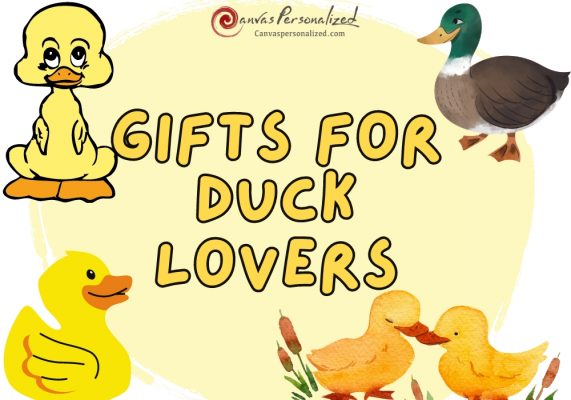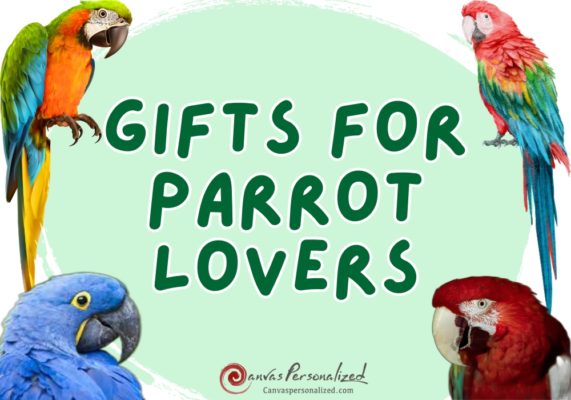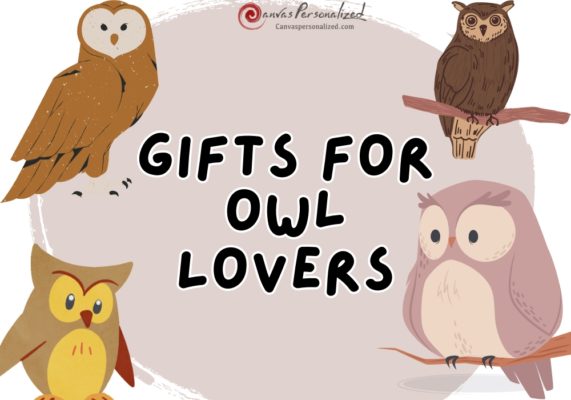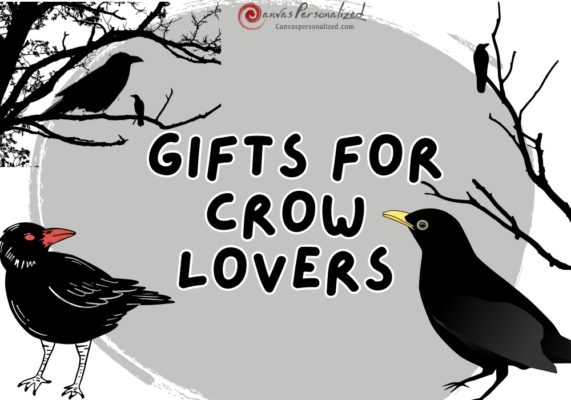Among domesticated birds, lovebirds stand out for their vivid plumage. Moreover, they are also one of the most popular tiny birds maintained as a pet worldwide. For those who have never had a pet bird before, these small “pocket parrots” are a great place to start. Canvas Personalized Blog has put together a list of 9 different types of lovebirds that you can keep as pet birds. Read on to find out which one is the best for you and your family!
Typical Characteristics Of A Lovebird
They have long, blunt tails, skinny bodies, and pointy beaks. People can usually tell them apart by their colors. One more thing that all variety of lovebirds has in common is that they all have zygodactyl feet. These tiny birds can sit on objects with two toes pointing forward and two toes facing back because of this balancing mechanism.
One of the most distinguishing features of lovebirds is that they are uniform in size. That’s because these parrots, on average, are much less than five inches in height. This is why people often refer to them as “pocket parrots.”
Different Types of Lovebirds Species To Keep As Playful Pets
1. Rosy-faced Lovebird
- Common names: Rosy-Faced Lovebird or Peach-Faced Lovebird
- Scientific name: Agapornis roseicollis
- Adult size: 7 – 8 inches from snout to the tip of the tail and weigh about 2 ounces.
- Lifespan: 12 to 15 years or more if well cared for
- Average price: $50-$150
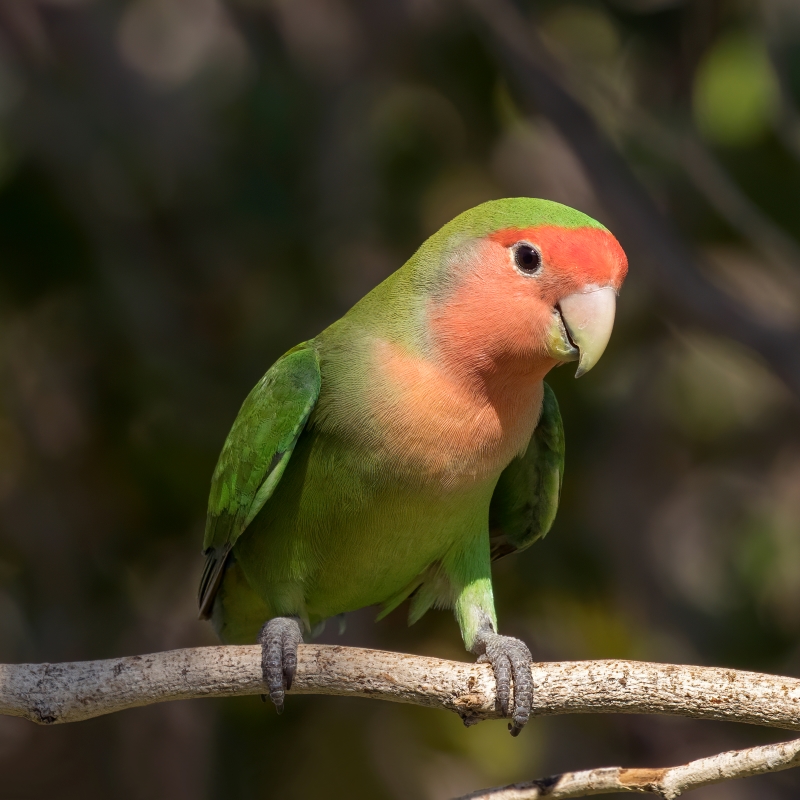
Named for its peach-colored face, these peach faced lovebirds are one of the most interesting and unique types of lovebirds. The only part of their body that isn’t green is their face. The shade of green on the rest of their body tends to change slightly based on sex. They are from the Southwestern African continent, and the Namib Desert is where they are most often seen.
2. Black-Masked Lovebird
- Common names: Black-Masked Lovebird or Yellow-Collared Lovebird
- Scientific name: Agapornis personata
- Adult size: This species’ males are larger than females. The birds weigh less than 1.75 ounces and are smaller than Rosy-Faced Lovebirds, at 2.3 inches.
- Lifespan: Up to 20 years
- Average price: $80-$400

This lovebird with a green body, yellow neck, and dark face is called Yellow-Collared Lovebird. Their beaks are usually a reddish color, but their yellow collars are the most noticeable thing about them, which is why they are called “Yellow-Collared Lovebirds”. They were first found in northeast Tanzania, but they have since been brought to Burundi and Kenya.
3. Fischer’s Lovebird
- Common names: Fischer’s Lovebird
- Scientific name: Agapornis fischeri
- Adult size: These are the smallest lovebirds, only 5 inches long and 1.5 – 2 ounces.
- Lifespan: Between 12 and 15 or more years
- Average price: $50-$150
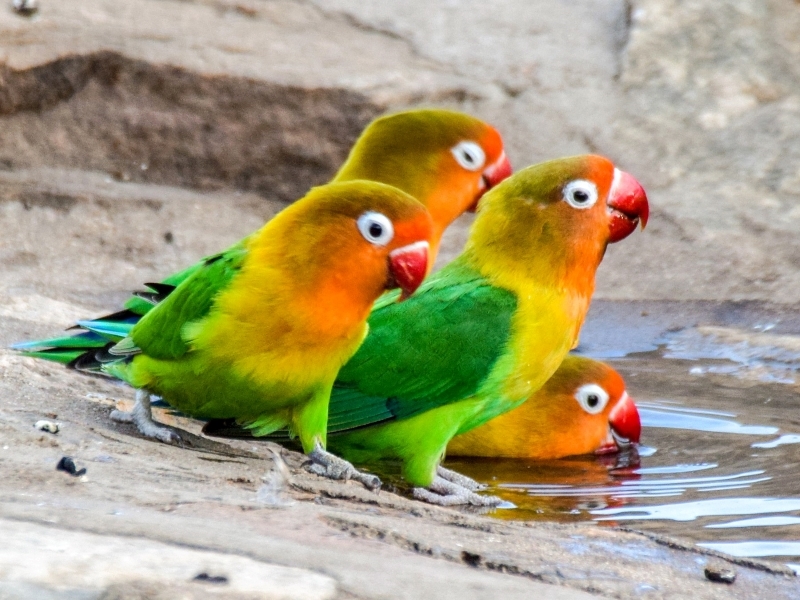
You may have trouble telling the difference between a Rosy-Faced Lovebird and a Fischer’s Lovebird if you see both species together. If you look closely, you’ll notice that Fischer’s Lovebird has more variation in coloration on its head. Fischer’s Lovebirds are endemic to the grasslands, woods, savannahs, and scrub forests of northern and central Tanzania.
4. Red-Faced Lovebird
- Common names: Red-Headed Lovebird, Red-Faced Lovebird
- Scientific name: Agapornis pullaria
- Adult size: They’re the smallest lovebird species at 5 inches or less and 1-1.25 ounces.
- Lifespan: Between 10 and 20 years
- Average price: $75 to $110
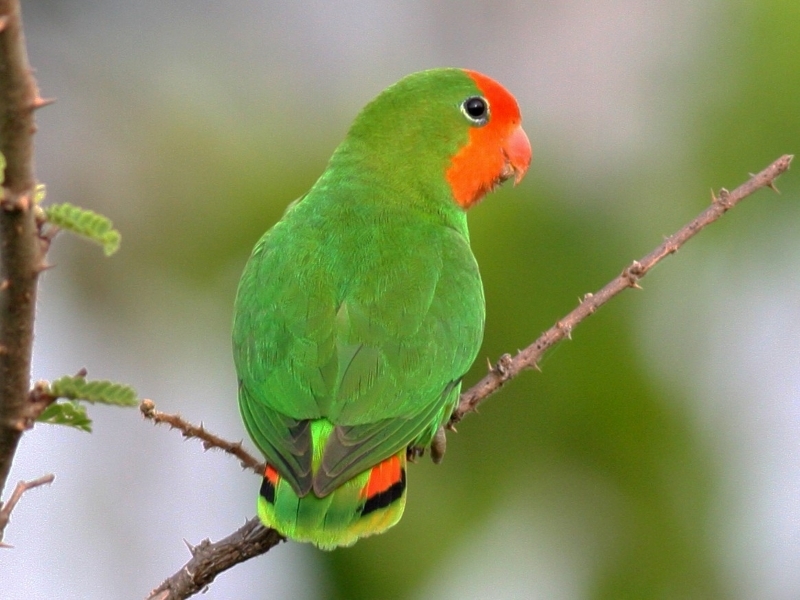
The Red-Headed Lovebird, which is all green plumage except for its bright red head, is another bird with an interesting look. They are native to Africa, like many other lovebirds, and can be found all over the continent.
5. Nyasa Lovebird
- Common names: Nyasa Lovebird or Lilian’s Lovebird
- Scientific name: Agapornis lilianae
- Adult size: From the top of their heads to the end of their tails, these lovebirds are a whopping 5.4 inches long. They are smaller than other species, weighing between 1.1 and 1.3 ounces.
- Lifespan: 10–12 years
- Average price: $59 to $89
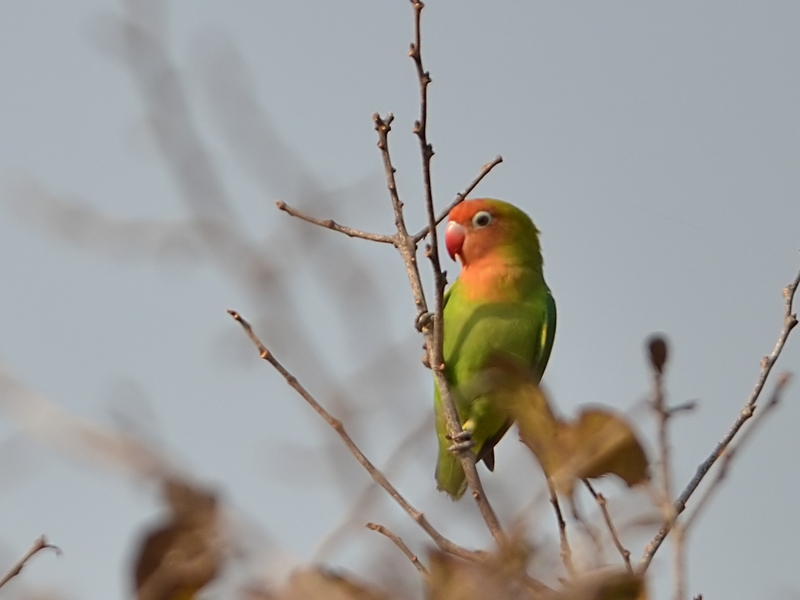
The Lilian’s Lovebird resembles the Rosy-Faced Lovebird, but its yellow body with dark green plumage and redder face set it apart. They can be recognized by their distinctive green, yellow, and red coloring and can be found in their native habitats of Malawi, Mozambique, Tanzania, Zambia, and Zimbabwe. As a result of rapid habitat loss, there are now fewer than 20,000 of these animals left in the wild.
6. Black-Cheeked Lovebird
- Common names: Black-Cheeked Lovebird
- Scientific name: Agapornis nigrigenis
- Adult size: On average, these birds are about 5.5 inches long and weigh about 1.4 ounces.
- Lifespan: Around 10 to 20 years
- Average price: $100 to $300
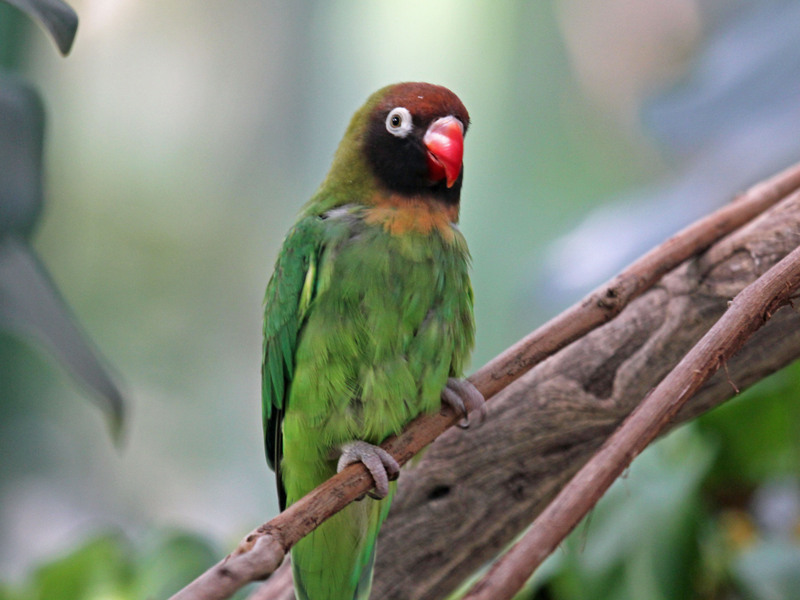
Even though Black-Cheeked Lovebirds are small like most other lovebird species, their black cheeks make them one of the most beautiful lovebirds. They have a black face, a tinge of crimson around them, and green plumage bodies. They can also be found in adjacent African countries, although Zambia is their natural habitat.
>> Read more: 12 Types Of Cockatoo – Superstar Pets With Colorful Crests
7. Black-Winged Lovebird
- Common names: Black-Winged Lovebird or Abyssinian Lovebird
- Scientific name: Agapornis taranta
- Adult size: These birds are larger than other lovebirds: between 6-7 inches long and weigh about 1.7 ounces on average.
- Lifespan: About 15 years on average
- Average price: $80-$400
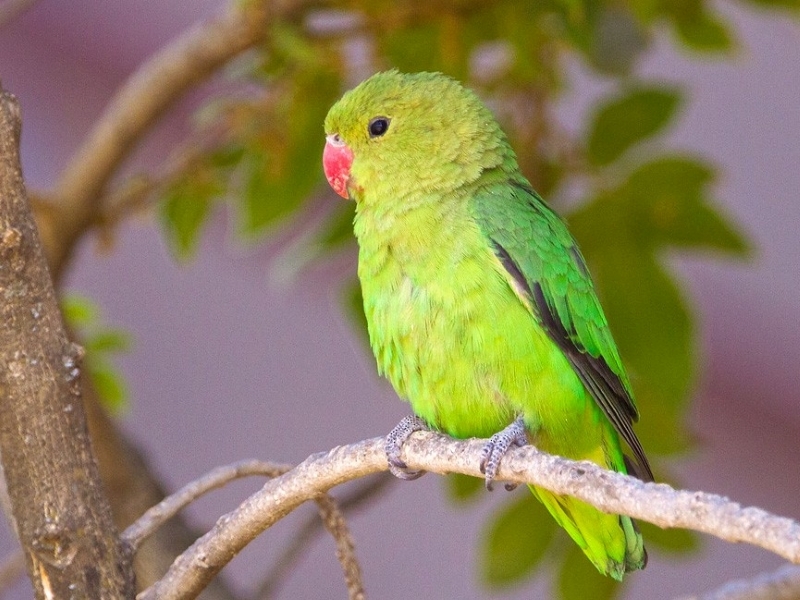
The Black-Winged Lovebird is another kind of lovebird that has an odd color difference on one part of its body. These cute little critters are green, but they have red faces and black wings. They are from Ethiopia and are one of the most beautiful birds in all of Africa.
8. Madagascar Lovebird
- Common names: Madagascar Lovebird or Grey-Headed Lovebird
- Scientific name: Agapornis cana
- Adult size: They’re the smallest lovebird species at 5 inches or less and 1-1.25 ounces.
- Lifespan: Between 10 and 20 years
- Average price: $250 – $500
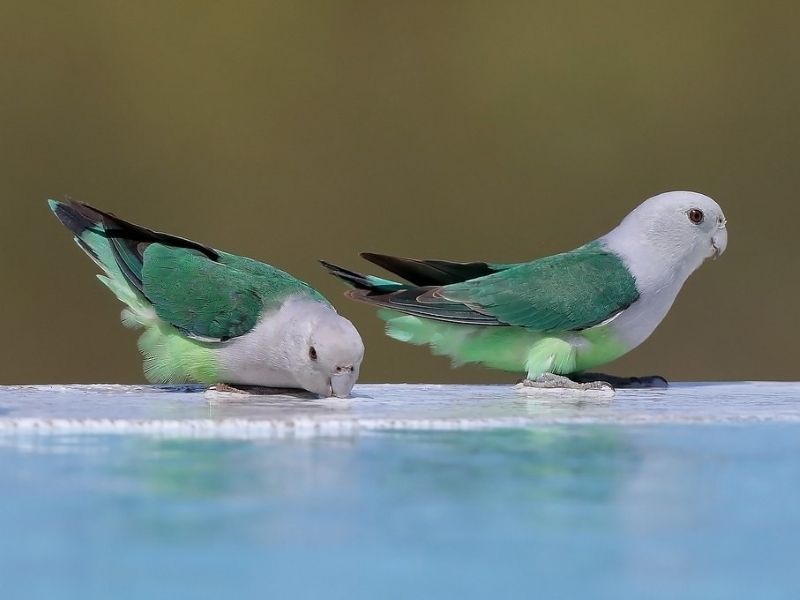
The Grey-headed lovebird is a common lovebird species in Madagascar. It comes from a place other than Africa. These grey headed lovebirds, as their name suggests, have green wings and feathers and a light grey and white head and neck. But these colors may change depending on whether the bird is male or female. Because how their bodies and features are different, these birds often look very pretty and unique.
9. Black-Collared Lovebird
- Common names: Black-Collared Lovebird or Swindern’s Lovebird
- Scientific name: Agapornis swinderniana
- Adult size: About 5 inches long from head to tail and 1.4 ounces in weight.
- Lifespan: Between 10 and 15 years
- Average price: Black-collared lovebirds are rare and can’t be bought at pet stores. Hence their selling price is unknown.

They are the most shy types of lovebirds, rarely venturing far from the safety of the trees they consider their homes. The birds can live in many different kinds of places, like the African forests. They live in the Republic of Congo, Cameroon, Cote d’Ivoire, Equatorial Guinea, Gabon, Ghana, the Central African Republic, Uganda, and Liberia.
Because the birds are mostly green, they only have a few marks on their bodies that help people tell them apart. They also have a black collar that stands out on the back of the neck. The Swindern’s Lovebird, also known as the Black-Collared Lovebird, is an endangered species.
How To Care A Pet Lovebird
Diet & Feeding
A varied diet is essential for lovebirds, as it is for other types of parrots. A lovebird’s food should be as diverse as a wild bird’s, including fruits, grasses, seeds, and vegetables.
The majority of the diet should consist of high-quality pelleted bird food. Add to that a wide selection of fresh foods and some seeds for added nutrition. Around 5% of one’s daily caloric intake should come from seeds.
Try to offer different kinds of fresh fruit and veg at different times. Remember that your lovebird might need time to get used to anything new, including food. Provide your bird a cuttlebone for a calcium-rich treat they may enjoy in their cage.
Common Heath Issues
- Psittacosis/chlamydiosis: decreased appetite, fluffed feathers, nasal discharge, lime green feces, an enlarged tummy, trouble breathing, and conjunctivitis.
- Diarrhea: Fecal part of stool is not formed (as opposed to the solid white pee portion or the clear liquid urine portion) might result from dietary changes, infections with bacteria or viruses, or even parasites living within the body.
- Feather plucking: The bird pulls out its own feathers. Boredom, stress, a bad diet, or other diseases could cause this.
- Egg-binding: a swollen stomach, trouble breathing, a hard time going to the bathroom, or bloody stools
Exercise
Lovebirds, like other parrots, are energetic and enthusiastic pets. They’ll do best if they get to play and talk with other people a lot. Your relationship with them will flourish if you pay them daily attention, and stop them from doing things you don’t like.
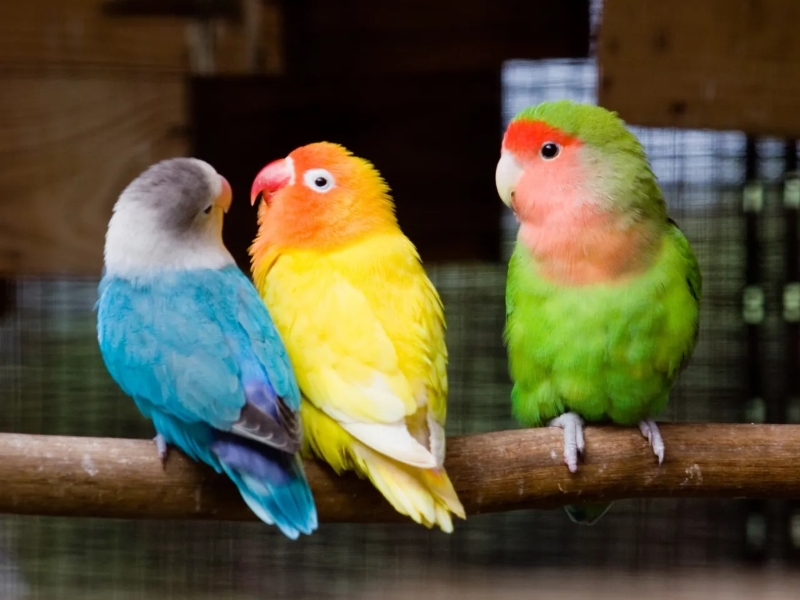
To keep these birds entertained, it’s best to have a wide variety of available toys and switch them out frequently. Ensure there aren’t any tiny pieces that could be chewed off and eaten. You should also protect your bird from clips, loose strings, and other small parts that could trap its beak, feet, or head. Wooden toys, sisal toys, leather toys, acrylic toys, paper toys, bells and ladders are all examples of safe playthings.
Are Lovebirds Good as Pets?
While Lovebirds may not be the first animals that spring to mind when thinking of pets, but there are several reasons why they make wonderful companions. They’re easygoing, require little in the way of maintenance, and can be taught simple skills. They also love being in close contact with people.
However, they are typically more aggressive and feisty than a cockatiel or parakeet. They have a ton of character and may be really loving after they’ve gotten to know you. Also, they have a reputation for being nasty, so they’re best for bird keepers with much experience. In the end, though, whether or not a Lovebird would be a good pet for you relies on your priorities and availability to care for the bird.
Purchasing Or Adopting Lovebirds
You may find lovebirds at most pet stores because they are popular pets. They are also reasonably priced. Depending on your options, the price of a Lovebird can range from $40 to $130. You can get Lovebirds at most pet stores if you aren’t finicky aboutare fine with the breed or color. But if you want something truly unique, you may need to seek out a breeder and be prepared to pay extra.
| Name | Location | Website |
| Feathered Friends Sanctuary & Rescue, Inc | Wisconsin | https://www.feathered-friends.com/ |
| The Lovebird Farm | Florida | http://www.lovebirdfarm.com |
| Lovebird Haven | Oregon | http://www.lovebirdhaven.com |
| Magnolia Bird Farm | California | https://www.magnoliabirdfarms.com |
| Parrots of the World | New York | http://www.parrotsoftheworld.com |
>>Further reading:
Many people keep lovebirds as pets since they’re fun and intelligent parrot species. All types of lovebirds are affectionate and social pets that need much care, but they can be great friends. Your lovebird won’t be a great talker, but with enough effort and time, you can teach it a few phrases. Canvas Personalized Blog recommends a lovebird as a good pet bird.





